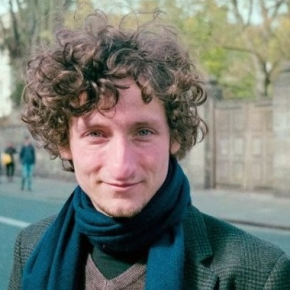Choose France: Bruno Loureiro recruited for his work combining machine learning and statistical physics
With the Choose France call, the CNRS is in charge of recruiting three international profiles in artificial intelligence. The first one is Bruno Loureiro, selected on the 2021 edition of the call, who will join the Computer Science Department of the École normale supérieure (DI ENS - CNRS/ENS - PSL/Inria) to continue his exploration of machine learning theory. Two positions are still available in a second recruitment campaign, which runs until September 30.
With the Choose France call, the CNRS is in charge of recruiting three international profiles in artificial intelligence. The first one is Bruno Loureiro, selected on the 2021 edition of the call, who will join the Computer Science Department of the École normale supérieure (DI ENS - CNRS/ENS - PSL/Inria) to continue his exploration of machine learning theory. Two positions are still available in a second recruitment campaign, which runs until September 30.
The explosion of machine learning should not make us forget that artificial intelligence tools still hold many mysteries. “I approach the theory of machine learning with methods derived from statistical physics, explains Bruno Loureiro, until now a postdoctoral fellow at the EPFL (École Polytechnique Fédérale de Lausanne). Although machine learning is used more and more, we still don't fully understand how the algorithms obtain their answers. This makes it impossible to certify their results, and therefore to use them freely for sensitive applications, such as cancer detection, driving autonomous vehicles or even in the judicial context."
The theory of machine learning is indeed mostly approached by tools from probability theory and statistics. These approaches are not fully adapted to the situation, as they mostly focus on cases where there is a lot of data for a small number of parameters. Machine learning multiplies the data, the parameters and the dimensions at the same time.
"As early as Ludwig Boltzmann's work in the 19th century, physicists had to develop methods capable of describing the motion, velocity and position of a huge number of individual particles, continues Bruno Loureiro. The tools of statistical physics make it possible to deal with these complex sets by reducing them to a smaller number of parameters, such as pressure or temperature, rather than knowing everything about each particle at all times. This approach, although born in a completely different context, is very useful for the theoretical study of machine learning."
Bruno Loureiro will now continue his work at the Centre Science des Données (CSD), inaugurated last year at the ENS. The CSD promotes interdisciplinary approaches between machine learning and other sciences by bringing together researchers from four laboratories: DI ENS (computer science), DMA (mathematics), LPENS (physics) and LSCP (cognitive science). Bruno Loureiro was recruited in the framework of the Choose France call.
“Colleagues at EPFL told me about the Choose France call and I was attracted by the possibility of returning to France with the means to set up my own research group, says Bruno Loureiro. This will give me the opportunity and the means to work with more independence than as a postdoc." France is not an unfamiliar country for the Brazilian researcher, who previously held postdoctoral fellowship at the Institute of Theoretical Physics (IPhT, CNRS/CEA).
The links between these two universes appeared at the end of the 1980s with the work of Bernard Derrida, who currently holds the chair of statistical physics at the Collège de France, and the British physicist Elizabeth Gardner. At the time, however, the limitations of computers and the scarcity of available data had blocked the development of neural networks. The explosion of interest in these artificial intelligence approaches, starting in the 2010s, has been accompanied by a rapid evolution of methods and tools to study them, including those used by Bruno Loureiro.
“I did my first postdoctorate at the IPhT to work with Lenka Zdeborová and Florent Krzakala, who are two big names in the modernization of these approaches, explains Bruno Loureiro. I then followed them when they moved to Switzerland. Now I have the opportunity to come back to France to set up my own group, and moreover at the ENS. The school was indeed directed for ten years by Marc Mézard, a specialist in statistical physics who supervised Lenka Zdeborová's thesis. I am delighted to be returning to France and I think it's great that the country offers opportunities to researchers of different nationalities."
